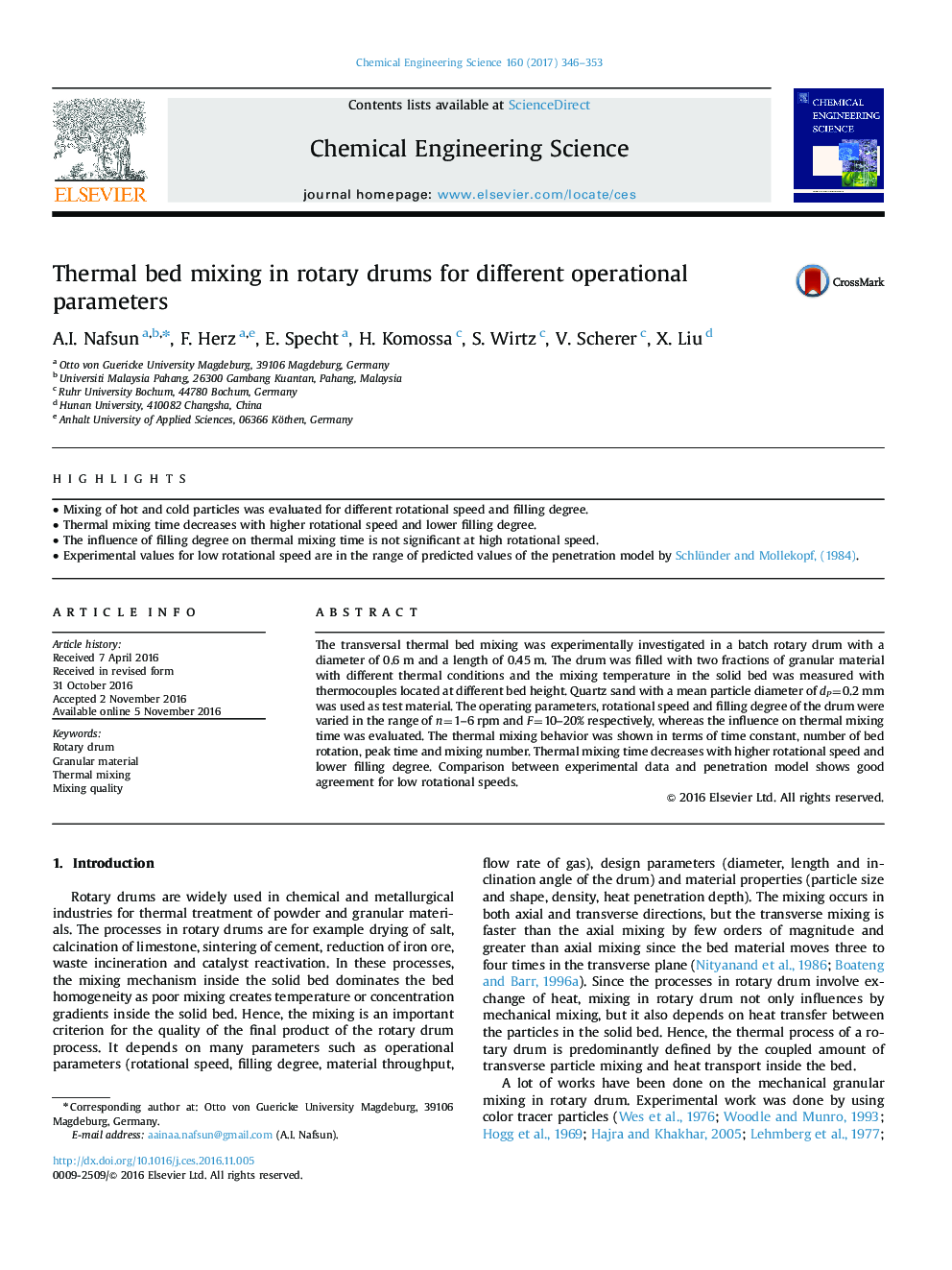| Article ID | Journal | Published Year | Pages | File Type |
|---|---|---|---|---|
| 6467740 | Chemical Engineering Science | 2017 | 8 Pages |
â¢Mixing of hot and cold particles was evaluated for different rotational speed and filling degree.â¢Thermal mixing time decreases with higher rotational speed and lower filling degree.â¢The influence of filling degree on thermal mixing time is not significant at high rotational speed.â¢Experimental values for low rotational speed are in the range of predicted values of the penetration model by Schlünder and Mollekopf, (1984).
The transversal thermal bed mixing was experimentally investigated in a batch rotary drum with a diameter of 0.6 m and a length of 0.45 m. The drum was filled with two fractions of granular material with different thermal conditions and the mixing temperature in the solid bed was measured with thermocouples located at different bed height. Quartz sand with a mean particle diameter of dP=0.2 mm was used as test material. The operating parameters, rotational speed and ï¬lling degree of the drum were varied in the range of n=1-6 rpm and F=10-20% respectively, whereas the influence on thermal mixing time was evaluated. The thermal mixing behavior was shown in terms of time constant, number of bed rotation, peak time and mixing number. Thermal mixing time decreases with higher rotational speed and lower filling degree. Comparison between experimental data and penetration model shows good agreement for low rotational speeds.
